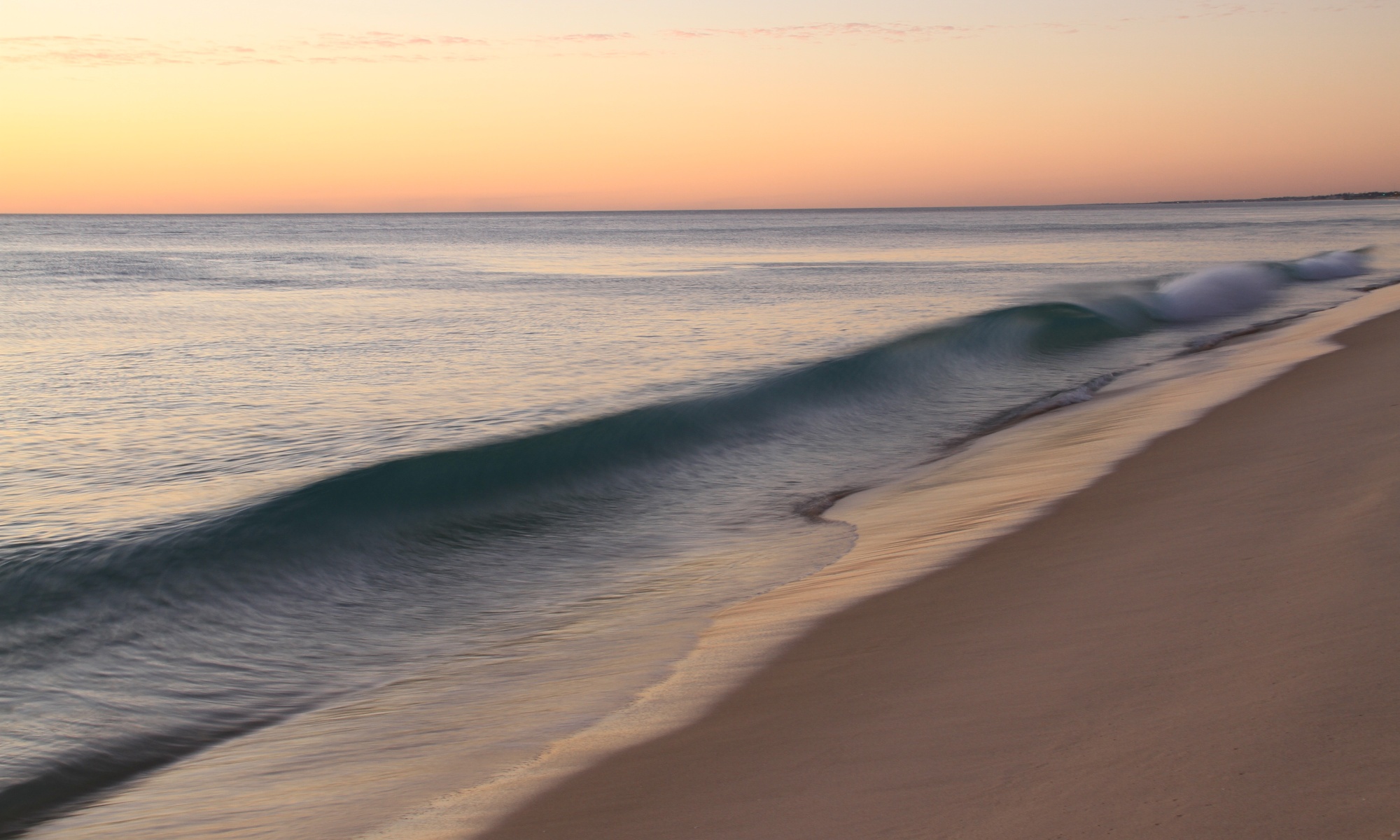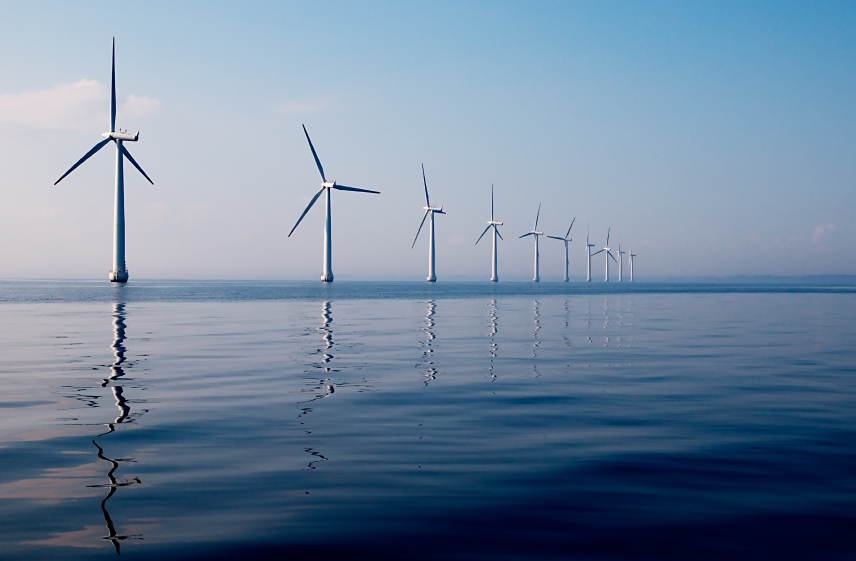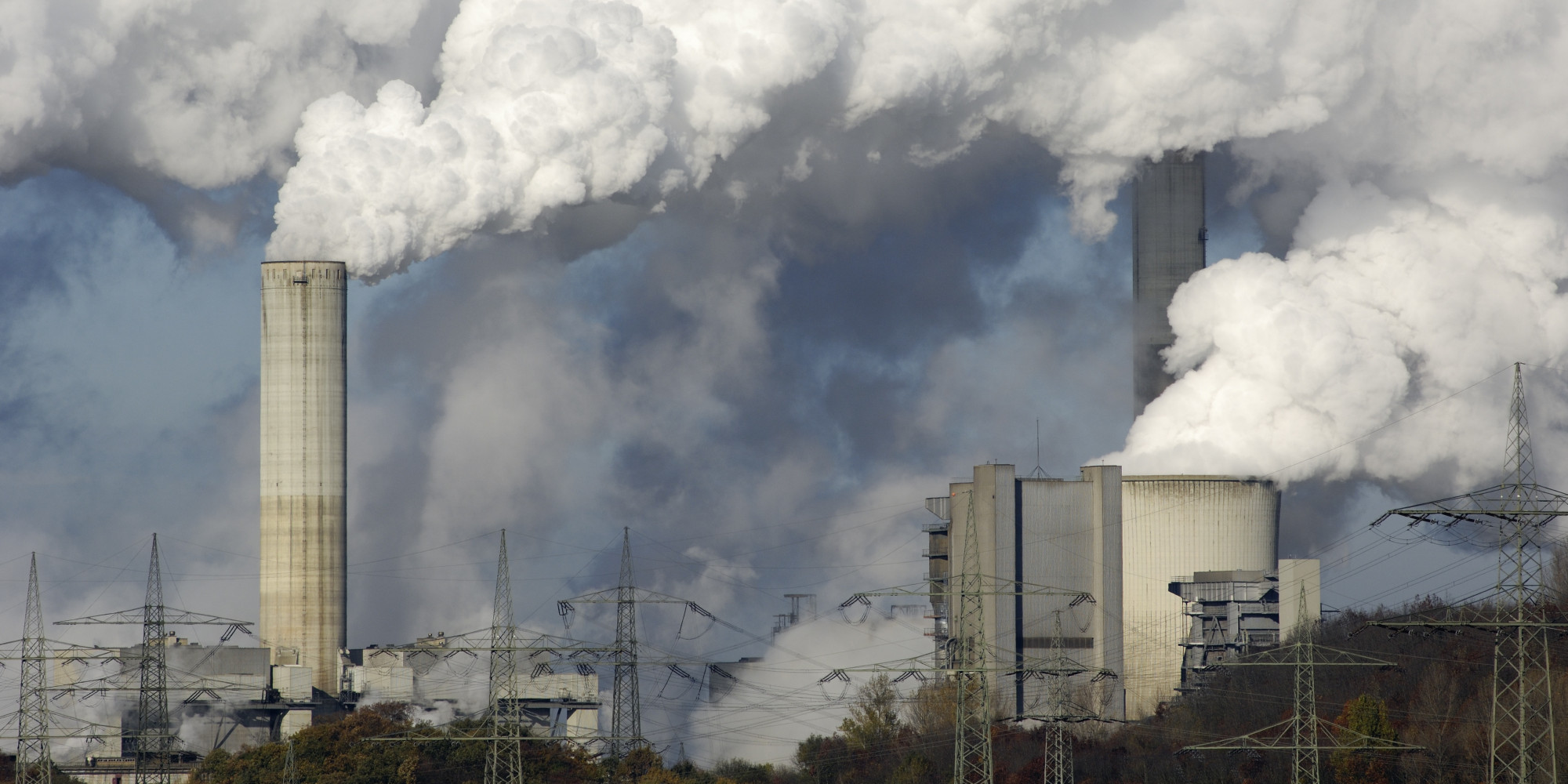Ocean Thermal Energy Conversion, or OTEC, is a new method of electric generation that uses the thermal differences between the warm water on the surface of the ocean and cold water in the deeper layers, as a means to generate power. There are both on-shore and off-shore designs for this type of electric generation. Below is an image depicting both types.
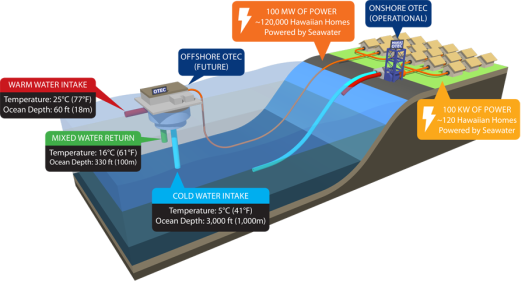
The different temperature waters are not used directly in the system, but instead help to heat and cool the working fluid, in this case ammonia, as it goes through a closed system, passing through a turbine to generate electricity. The warm water is pumped through a coil that warms the liquid ammonia till it vaporizes, wherein it travels through the turbine. Once through, the cold water is pumped through a similar coil on the opposite end of the system that condenses the now gaseous ammonia back into a liquid state. The diagram below illustrates this process.
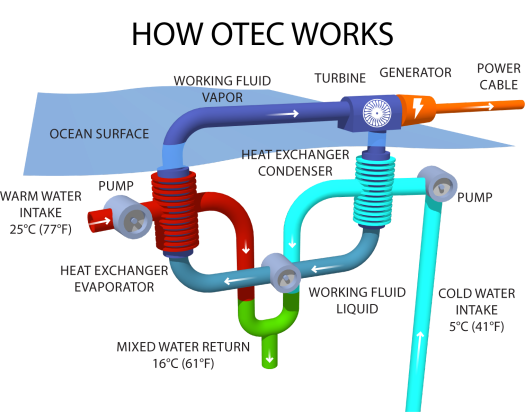
There is not currently an OTEC plant in operation, rather there is a testing facility run by Makai Engineering that hopes to optimize all the components in the system in order for it to be effective at generating electricity. One of the more important parts are the heat exchangers, which are pretty much the sole drivers of this process. Without an efficient transfer of heat to and from the working fluid, it would fail to generate electricity.
Although there is still quite a bit of work to do, the potential benefits of this system are many. It would provide renewable, constant energy for communities located along the coast. The required resources for this process, warm and cold ocean water, are very easy to come by, and there no potential sources of pollution.
If you’d like to read more about OTEC, check out this page.
Thanks so much to all of you who read my posts, even if it is just a handful. I hope you are all learning something from these. Let me know if there is anything you’d like me to write about and I’ll be sure to include it as one of my posts. As always, please like, subscribe, and share with your friends!
